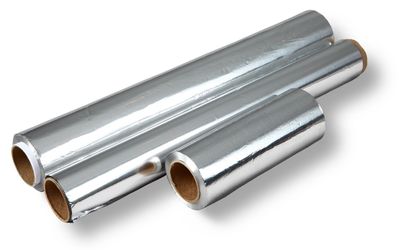Barium titanate 99.99% 10 g
SKU 000518
€ 162,00
In stock
1
Save this product for later
Barium titanate 99.99% 10 g
Product Details
CAS number: 12047-27-7
Chemical formulas: BaTiO3/ F.W. 233.24
Cation: Ba
Packaging: 10 g
EAN: 8721028214720
Brand: Laboratoriumdiscounter
Barium titanate is a versatile ceramic material with exceptional electrical and dielectric properties, making it highly sought after in various industries. Its ability to store and release electrical energy efficiently makes it ideal for use in capacitors, sensors, and electronic devices. Additionally, barium titanate exhibits ferroelectric behavior, enabling it to be used in memory devices and piezoelectric applications. With its unique combination of properties, barium titanate continues to be a key material in advancing technology and innovation.
When working with Barium titanate, it is important to follow certain safety instructions to minimize the risk of accidents or exposure to harmful substances. Here are some short safety instructions to consider: 1. Personal Protective Equipment (PPE): Always wear appropriate PPE, including gloves, safety goggles, and a lab coat or protective clothing, when handling Barium titanate. This will help protect your skin, eyes, and clothing from potential contact or splashes. 2. Ventilation: Work in a well-ventilated area or use a fume hood to prevent the inhalation of dust or fumes generated during handling or processing of Barium titanate. Ensure that the ventilation system is functioning properly. 3. Handling: Avoid direct contact with Barium titanate powder or solutions. Use appropriate tools, such as spatulas or tongs, to handle the material. Minimize the generation of dust by using wet methods or containment measures. 4. Storage: Store Barium titanate in a tightly sealed container in a cool, dry place away from incompatible substances. Follow any specific storage instructions provided by the manufacturer. 5. Spills and Cleanup: In case of spills, carefully clean up the material using appropriate methods, such as vacuuming or wet wiping. Avoid creating dust or spreading the material further. Dispose of the waste according to local regulations. 6. First Aid: In case of accidental exposure or ingestion, seek medical attention immediately. Rinse affected areas with plenty of water and remove contaminated clothing. Provide medical personnel with all relevant information about the substance. 7. Training and Knowledge: Ensure that you are adequately trained and knowledgeable about the properties, hazards, and safe handling practices of Barium titanate before working with it. Stay updated on safety guidelines and procedures. Remember, these are general safety instructions, and it is essential to consult the specific safety data sheet (SDS) and guidelines provided by the manufacturer for comprehensive information on handling Barium titanate safely.
Please note, not all safety data for this product is available on our website, for a complete list of P en H sentences and other safety instructions please request the MSDS at our customer service
You May Also Like

(R)-3-Amino-1-N-Cbz-piperidine, 97.0%, 25g
(R)-3-Amino-1-N-Cbz-piperidine, 97.0%, 25g
SKU F040825-25G
€ 440,00

Ethyl-2,2-difluoropentanoate, 95.0%, 5g
Ethyl-2,2-difluoropentanoate, 95.0%, 5g
SKU F035961-5G
€ 2 228,60
Display prices in:EUR










![N-{4-[(2E)-3-(dimethylamino)prop-2-enoyl]phenyl}acetamide, 95.0%, 250mg N-{4-[(2E)-3-(dimethylamino)prop-2-enoyl]phenyl}acetamide, 95.0%, 250mg](https://d2j6dbq0eux0bg.cloudfront.net/images/88473019/4780575667.png)
